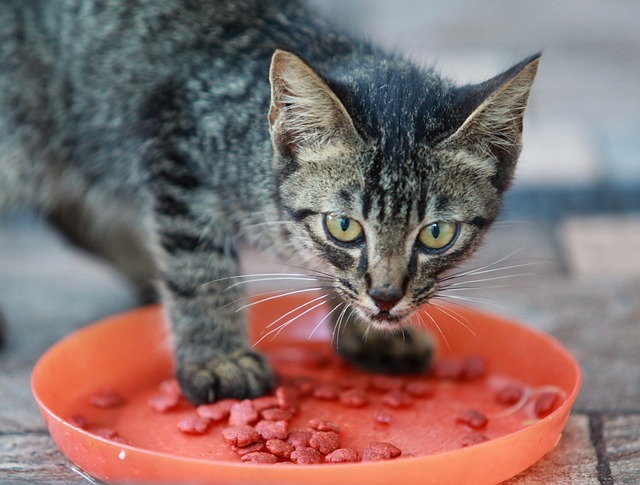As pet parents we certainly know that our kitties need a balanced, nutritional diet to stay healthy. But how much food in kitty’s bowl does that equate to? Using a Goldilocks approach we want to make sure that the portions we serve are not too small, not too big, but just right.
How do we determine what amount is “just right?”
To figure this out it’s best to work with calories rather than portion size. And the correct number of calories will be determined by your cat’s weight, health and activity level as well as age and whether kitty is spayed/neutered. For example, a kitten needs more calories than an adult cat while a senior cat may need less. It’s important to know your cat’s weight to do a proper calculation. You should have this information on the documentation from kitty’s last vet visit; a DIY way to determine weight is to hold kitty while you step on the scales, note that weight, then weigh yourself without kitty in your arms and subtract that number from the first number.
Then take a look at the container kitty’s food comes in – can or bag. Each container will have calorie information at the end of the ingredients list that says x number of kcal (kilocalories which are used interchangeably with calories) per can (for wet food) and x number of kcal per cup (for dry food). Denser wet food formulations (like paté) and dry foods have more calories. Your vet can help you determine the optimal number of calories for your cat but generally speaking, cats should eat about 20-35 calories per pound of body weight per day. So a 10 pound, indoor only cat with normal activity levels needs about 200 kcalories per day. Unspayed and unneutered cats and outdoor cats require more calories. And obviously if your kitty is underweight or overweight the calorie requirement would be higher or lower.
Converting Calories into Portion Size
Let’s say your cat’s wet food has 194 calories per can and kitty weighs 10 pounds. So 10 times 20 (needed calories per pound of body weight) equals 200 calories which would mean kitty needs one can of food per day.
In the case where you feed a combination of wet and dry food, the calorie content of the dry food needs to be factored in to determine the optimal number of calories. Again, let’s say your cat’s wet food has 194 calories per can and kitty weighs 10 pounds. The dry food you feed has 463 calories per cup. So one feeding option would be ½ can of wet food (97 calories) and just under 1/4 cup of dry food (103 calories) for a total calorie intake of 200 calories per day.
If you feed treats on a regular basis, the calories in these must be added into the total calorie count for the day so you don’t go over the target number. Treat calories should be no more than 10% of total calories. So in our example above, the treats you feed in a day should not amount to more than 20 calories and the wet and dry food portions should be adjusted to accommodate those 20 treat calories.
All this figuring may seem a bit daunting at first but once you’ve done the calculations once, you’re done unless your cat’s circumstances change. Your vet is a great resource to help you determine the appropriate amount of calories and the “just right” portion of food your kitty needs to live a healthy, happy life.
